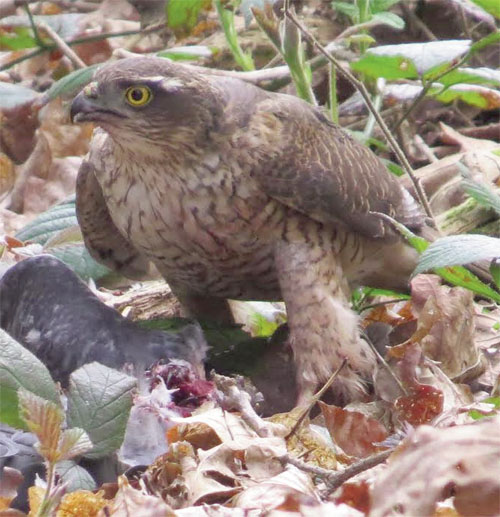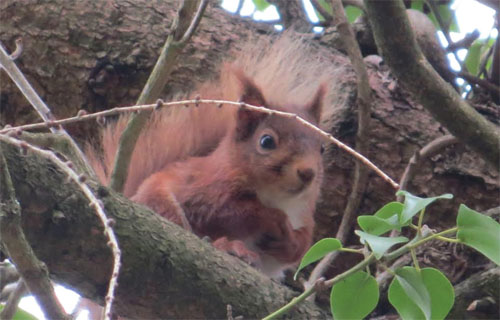| June
/ 2018 - Michael Ryan
|
|
Good
news from Dalkey Hill where a recent round of trapping by park staff
and a squirrel researcher found the baited traps had caught three
reds including a female red squirrel who they found was lactating
so evidently had recently given birth. She wasn’t in the trap
for long before being recorded, weighed and then released to return
to her little family. We hadn’t seen any reds for a while ourselves
when one of the park staff told us he’d seen one at the base
of Dalkey Hill. |
|
|
|
|
|
In last month’s Newsletter I wrote about a pair of Long Tailed Tits that were building a nest in our garden but I expressed concern for them, citing figures that show there is a very high failure rate for that species’ nests. Sadly the article hadn’t even gone to press before my pessimism was proven correct. We’d picked up some feathers in the woods the day before and left them for the pair to collect. They took most of them but the following day some feathers remained uncollected and as the day progressed there was no sign of the pair who, for the previous weeks, had been buzzing in and out of the tree dozens of times a day. I thought maybe one of the pair had been predated on as the nest was almost directly on the flight path of a sparrowhawk that darts in low over the garden wall and glides swiftly a few feet above the ground before heading around the corner of the house and across the back lawn hoping to take a hapless bird on the feeders by surprise. Its below radar flight helps it avoid early sighting by birds who will set up a chain of high pitched alarm calls to warn other birds. |
| Much as I love to see sparrowhawks I always hope they’ll miss their target or have the illogical hope that if they catch a bird it’ll be in someone else’s garden. Later we saw the long tailed tits nest had been damaged, there were feathers and bits of moss underneath it on the lawn indicating the nest had been raided. But a glimmer of hope appeared a week later when Lucy spotted a pair of long tailed tits in the back garden. No way of knowing they were the same pair until we followed them around the garden and they both individually flew into the little tree where the nest had been, emerging a few seconds later before flying off so we thought there was every chance they were the same pair, maybe recycling material from the failed nest for a new one they were building. That sparrowhawk we’d regularly see in the garden was a male, with grey wings and back and russet striped chest but a few weeks later it was a much larger female we came across in the woods. I’d have blundered out and inadvertently scared it away but Lucy spotted it on the ground holding down a woodpigeon it had just caught and we froze. We weren’t much more than thirty feet way and although we were standing behind a bush it was hard to imagine she hadn’t seen us as she frequently stared directly at us. But we watched her for over ten minutes as she stood astride the unfortunate bird, wings spread protectively and tore at it, rending off bits of flesh but always alert to her surroundings. A woodpigeon is probably the largest bird a female sparrowhawk can take and when they do catch one they probably do so by flying down and forcing it to the ground so it was very impressive feat of strength to witness when, as two walkers approached, she picked up the remains of the pigeon and carried it off to another more secretive part of the wood. |
 The
sparrowhawk was feeding on a woodpigeon it The
sparrowhawk was feeding on a woodpigeon ithad just caught Photo: Michael Ryan |
DALKEY HOME PAGE | DALKEY COMMUNITY COUNCIL | DALKEY HERITAGE COMPANY | CANNONAID




 The
Red Squirrel we’d followed from near the car park to
The
Red Squirrel we’d followed from near the car park to